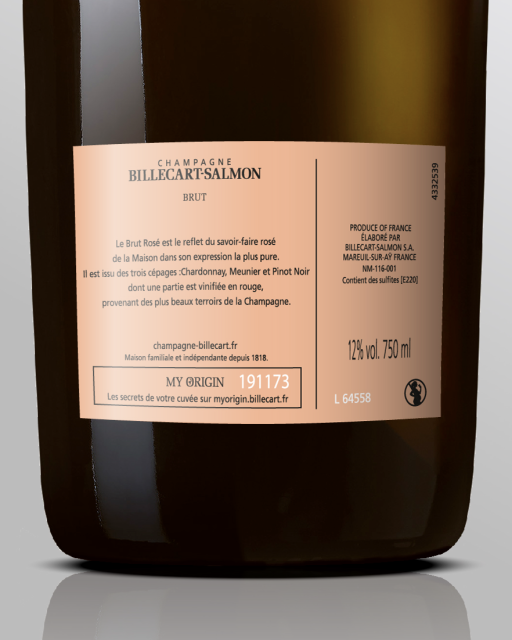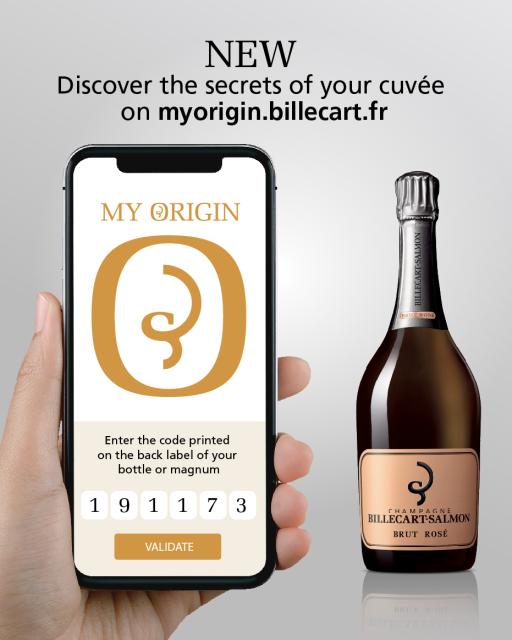This website uses cookies so that we can provide you with the best user experience possible. Cookie information is stored in your browser and performs functions such as recognising you when you return to our website and helping our team to understand which sections of the website you find most interesting and useful.
Champagne Billecart-Salmon introduces ID code for ‘greater transparency’
Champagne Billecart-Salmon has added a numeric code to its bottles in a bid to bring “greater transparency” for consumers of the fizz, according to the brand’s CEO, Mathieu Roland-Billecart.

The code, called ‘My Origin’, has been added to all back labels of Billecart-Salmon non-vintage cuvées, including its famous Brut Rosé, from last month, and will feature on all its vintage cuvées too from the start of this year.
The numbers can be entered into the producer’s website to reveal all aspects to the Champagne, from the base vintage to the dosage and disgorgement date, along with the grape varieties used, with the first two digits representing the base year or vintage of the cuvée.
Speaking exclusively to the drinks business earlier this year, Roland-Billecart said that the move was an attempt to offer the producer’s customers “greater transparency”, whether such information was required by trade professionals or “a community of Champagne lovers who want that level of detail.”
On the other hand, he added, “If they are not interested [in the constituents of the Champagne], then it looks and feels the same way.”
He also said that that it helps the brand’s clients “manage their stock levels”.
It’s also part of a wider move in Champagne to reveal the differences in the make-up of each release of a brand’s Brut NV, which, while blended to try and create a consistent style, doesn’t taste the same.
As previously reported by db, for some houses this has meant rebranding their non-vintage cuvées to promote the fact that each blend, which is created around a new base year, is slightly different.
Jacquesson started the trend with its brut NV ‘700-series’ in 2000, beginning with a released numbered 728. It was then followed by Krug, which introduced a numbering system to highlight the unique nature of each annual blend of its multi-vintage Grande Cuvée in 2015 – starting with its 160th edition, which hit the shelves in 2016.
Following these producers was Louis Roederer, which in 2021 announced the end of its Brut Premier NV, and, in its place, the launch of Collection 242, because the inaugural cuvée was based around the 2017 vintage, which was the 242nd harvest since the foundation of Roederer in 1776.
Then, most recently, was Lanson, which is rebranding its Le Black Label. As a result, from this month, it becomes Le Black Creation 257, because it will be the 257th blend since Lanson was founded in 1760.
With 2024 seeing Lanson launch Le Black Creation 258, the plan is to assign each new blend a different number, with the intention to “talk much more precisely to all the critics and sommeliers about what is in the blend each year,” according to president of the house, François Van Aal.
Speaking further about Billecart-Salmon’s My Origin, Roland-Billecart, said that the producer’s non-vintage blends, be they blanc or rosé, were always slightly different, depending on the base year, along with the other components used in the cuvées.
“Our Brut NV is always different, we have never said that each blend is identical,” he said, adding that the aim was to combine several vintages to create “a harmonius blend, with one plus one being three.”

Read more
Big change planned for Champagne Lanson’s best-selling label

